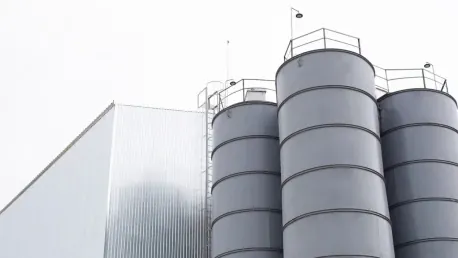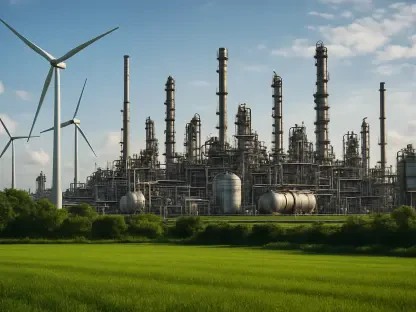The proposed large-scale fuel plant on the Tk’emlups Reserve has sparked significant concerns among residents of the nearby communities of Westsyde and Oak Hills. This refinery intends to convert vegetable oils, such as canola and soybean oil, into low-carbon jet fuel or diesel. The project is spearheaded by Azure Sustainable Fuels Corp. in collaboration with Tk’emlups te Secwepemc and Scw’exmx Economic Development Corporation. The site in question is situated along the CN Rail tracks, south of Rayleigh. Despite the potential benefits of transitioning to alternative fuels, the community has voiced considerable unease regarding the environmental and health implications of the facility.
Community Awareness and Concerns
General Unawareness and Environmental Impact
Kathleen Feschuk, a resident of Oak Hills, has raised concerns about the general lack of awareness within the community regarding the refinery project. She underscores the critical need for more information and details about the potential environmental impacts, especially as it pertains to noise, water, and air pollution. The area is already grappling with air quality issues, making the introduction of the refinery a potential exacerbating factor.
The intricate balance of the local environment could face disruption due to the industrial activities associated with the refinery. Noise pollution from the plant’s operations, combined with the inevitable increase in vehicular movement, could significantly alter the quality of life for residents. The potential for water pollution also raises alarm, considering the reliance on local water resources. Additionally, air pollution remains a poignant concern given the area’s pre-existing issues with air quality, which could directly impact the health and well-being of the neighborhood’s inhabitants.
Water Usage and Fish Populations
Equally concerned is John Wieczorek, another Oak Hills resident, who highlights the inadequacy of public consultation regarding the project’s development. He fears the potential adverse effects on the local salmon populations in the Thompson River due to increased water usage and wastewater from the plant. This issue is particularly pressing, as the river is a critical habitat for salmon and an essential component of the local ecosystem.
Wieczorek’s primary concern revolves around the potential for water pollution, which could disrupt the natural habitat and lifecycle of the salmon. The large-scale extraction and subsequent pollution of water resources could have far-reaching repercussions on the river’s biodiversity. Additionally, the fear of increased air pollution affecting individuals with respiratory conditions, such as his wife who has asthma, underscores the broader health implications of the refinery. The potential exacerbation of respiratory issues due to declining air quality is a significant worry that needs careful consideration.
Visual and Aesthetic Impact
The Refinery’s Appearance
The visual impact of the refinery is another aspect that has not escaped the attention of local residents. Murray Smith, who lives in Westsyde, has articulated his concerns about the project’s visual implications, describing the refinery as an eyesore in the neighborhood. He emphasizes that the refinery could significantly alter the community’s landscape, and this change could be a constant reminder of the associated environmental and health concerns.
The establishment of the refinery could disrupt the natural and aesthetic charm of the neighborhood. The industrial infrastructure could dominate the skyline, diminishing the visual appeal of the area. This aesthetic alteration not only affects the physical landscape but also influences the psychological well-being of residents who cherish their neighborhood’s natural beauty. Smith’s insistence on the need for Kamloops citizens to be fully informed reflects the desire for proactive community involvement in major projects that could impact their daily lives.
Concerns About Alternative Fuel Sources
Despite these concerns, the residents are not inherently opposed to the concept of alternative fuels. The consensus indicates support for renewable energy initiatives but questions the suitability of the refinery’s proposed location in a populated area. Wieczorek’s stance illustrates this point well—while he acknowledges the necessity for alternative fuel sources to achieve environmental sustainability, he believes that the current location of the refinery is inappropriate for such a large-scale industrial operation.
The primary contention lies in the risk and inconvenience posed by situating the refinery so close to residential areas. Residents underscore the feasibility of alternative energy solutions but in locations that do not compromise their quality of life. This sentiment drives the ongoing dialogue about finding a balanced approach that aligns with both environmental goals and community health and safety standards.
Transparency and Continued Engagement
Developer’s Commitment to Transparency
Addressing these concerns, Tana Jones, the project lead with Scw’exmx Economic Development Corporation, has reiterated their commitment to transparency and community engagement. Environmental studies are currently underway, and there is anticipation for a website dedicated to providing detailed findings and regular updates about the project’s progress. This initiative aims to bridge the information gap and foster a more informed community discourse around the project.
Jones emphasizes that the well-being of the community remains a priority and assures that public engagement will continue throughout the project’s lifecycle. By ensuring consistent and transparent communication, the developers seek to build trust and address the apprehensions of the residents effectively. The initiative to establish a dedicated platform for project updates signifies a proactive step towards maintaining open channels of communication.
Commitment to Community Well-Being
Jones’ assertion highlights the developers’ efforts to consider the community’s well-being as the project progresses. By vowing to keep the public informed and engaged, the developers demonstrate a recognition of the importance of community buy-in for such large-scale projects. This continued commitment is essential in mitigating fears and ensuring that the project’s potential benefits are clearly communicated and understood by all stakeholders.
The ongoing environmental studies are crucial in addressing the specific concerns raised by residents, such as noise, air, and water pollution. Detailed and transparent reporting of these studies’ findings may help alleviate some of the worries and contribute to a more nuanced understanding of the project’s impact. This holistic approach can pave the way for more constructive dialogue between the developers and the community.
Culminating Community Concerns and Future Steps
The proposed large-scale fuel plant on the Tk’emlups Reserve has raised significant concerns among residents of Westsyde and Oak Hills. The refinery plans to convert vegetable oils like canola and soybean oil into low-carbon jet fuel or diesel. This project is led by Azure Sustainable Fuels Corp., in partnership with Tk’emlups te Secwepemc and the Scw’exmx Economic Development Corporation. The chosen site lies along the CN Rail tracks, just south of Rayleigh. Despite the promise of alternative fuel sources, the community is worried about the environmental and health impacts of the facility. While low-carbon fuels can help reduce reliance on traditional fossil fuels and lower greenhouse gas emissions, residents fear potential negative effects such as air and water pollution. They also worry about the possible strain on local infrastructure and services. Such concerns highlight the need for careful examination and community engagement as the project moves forward.









